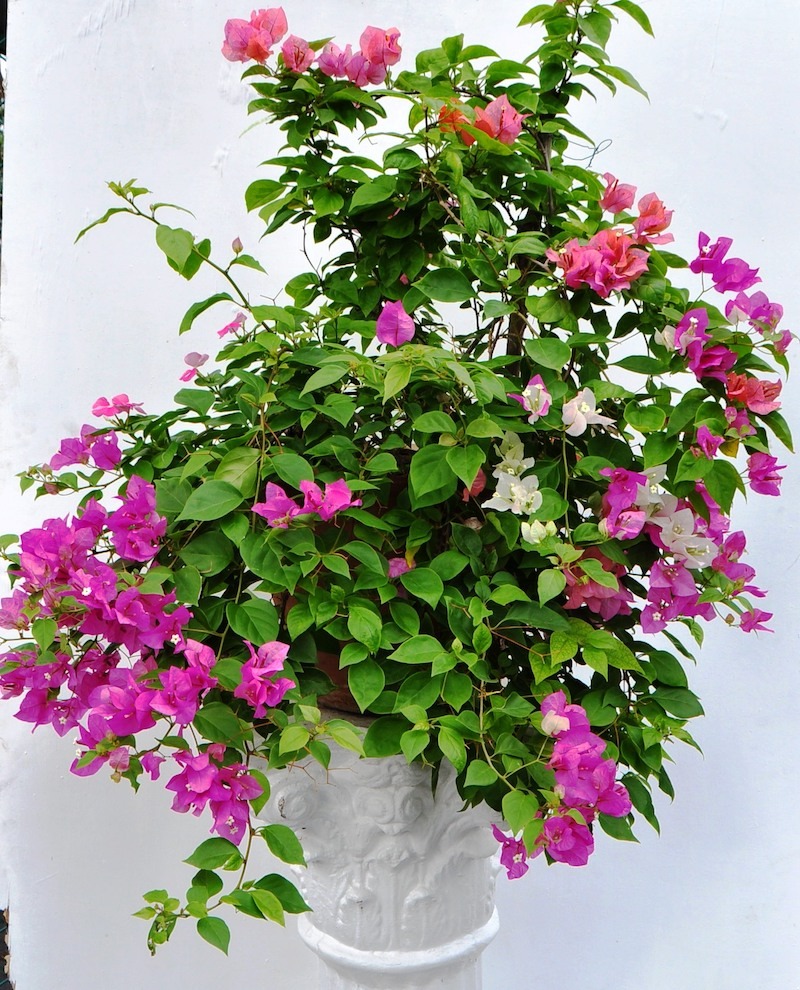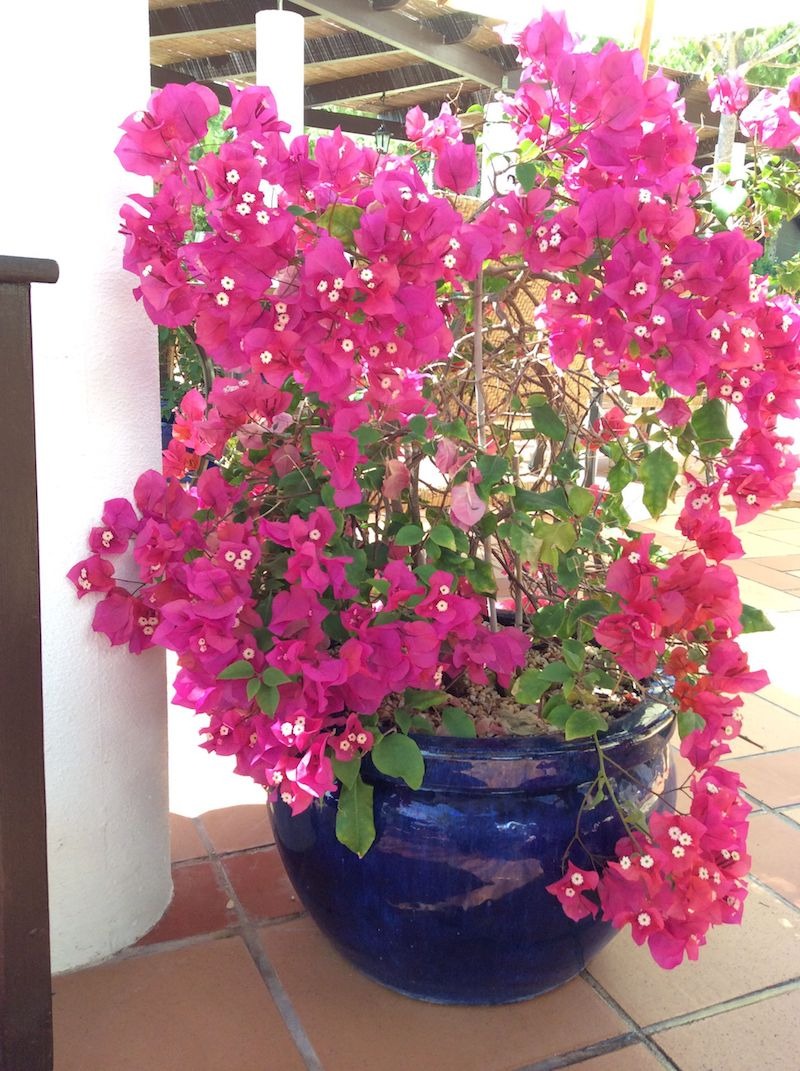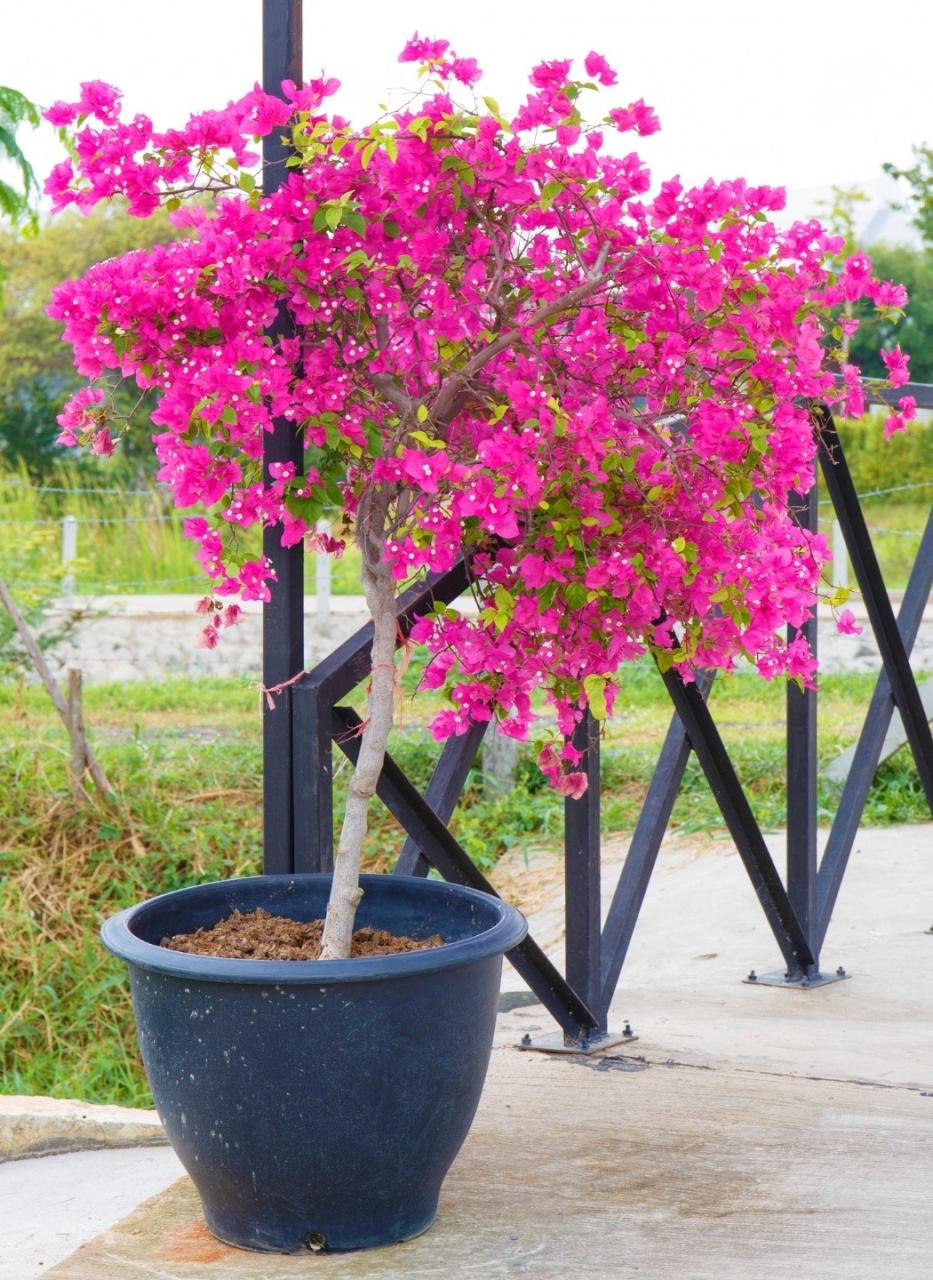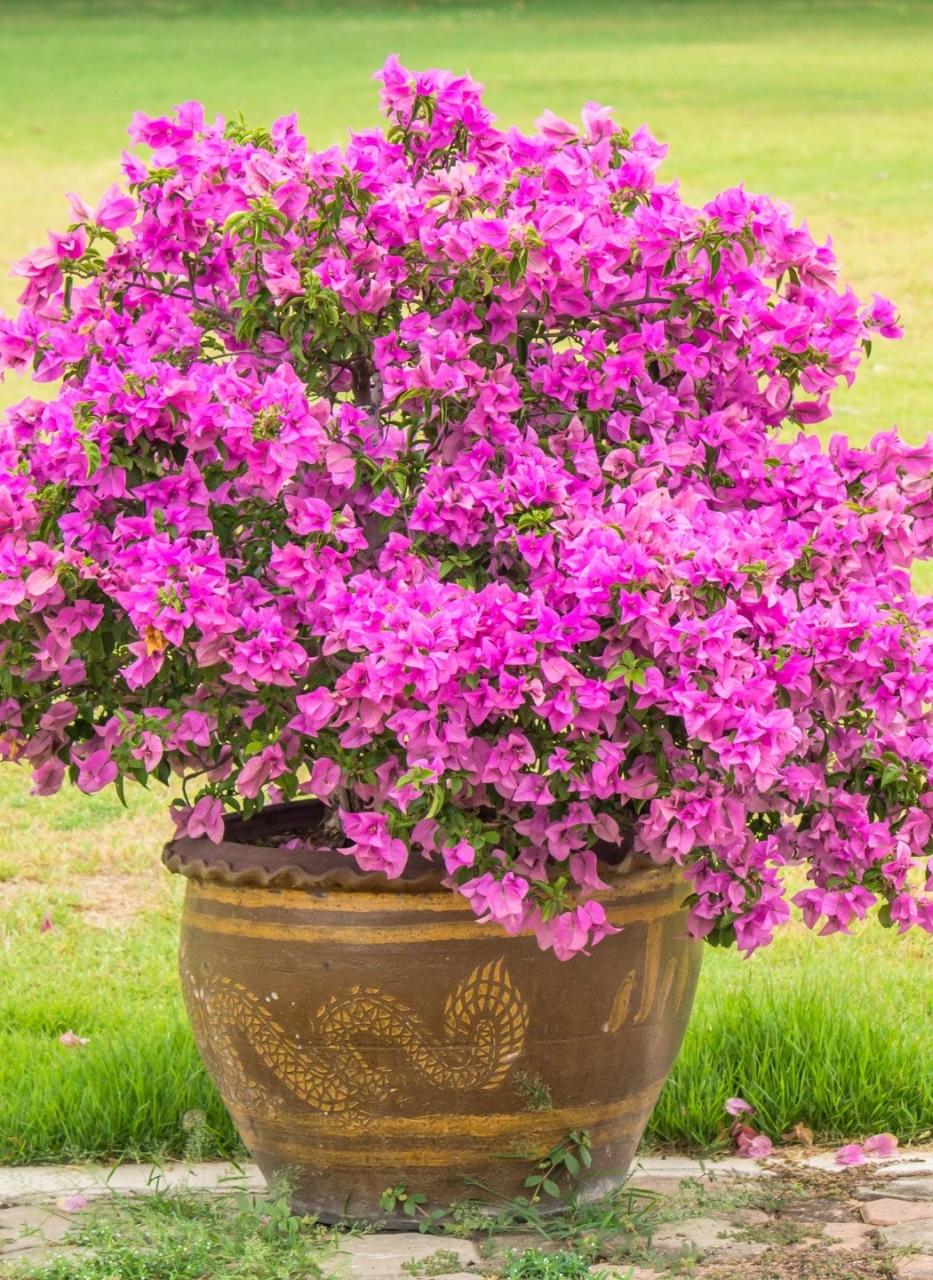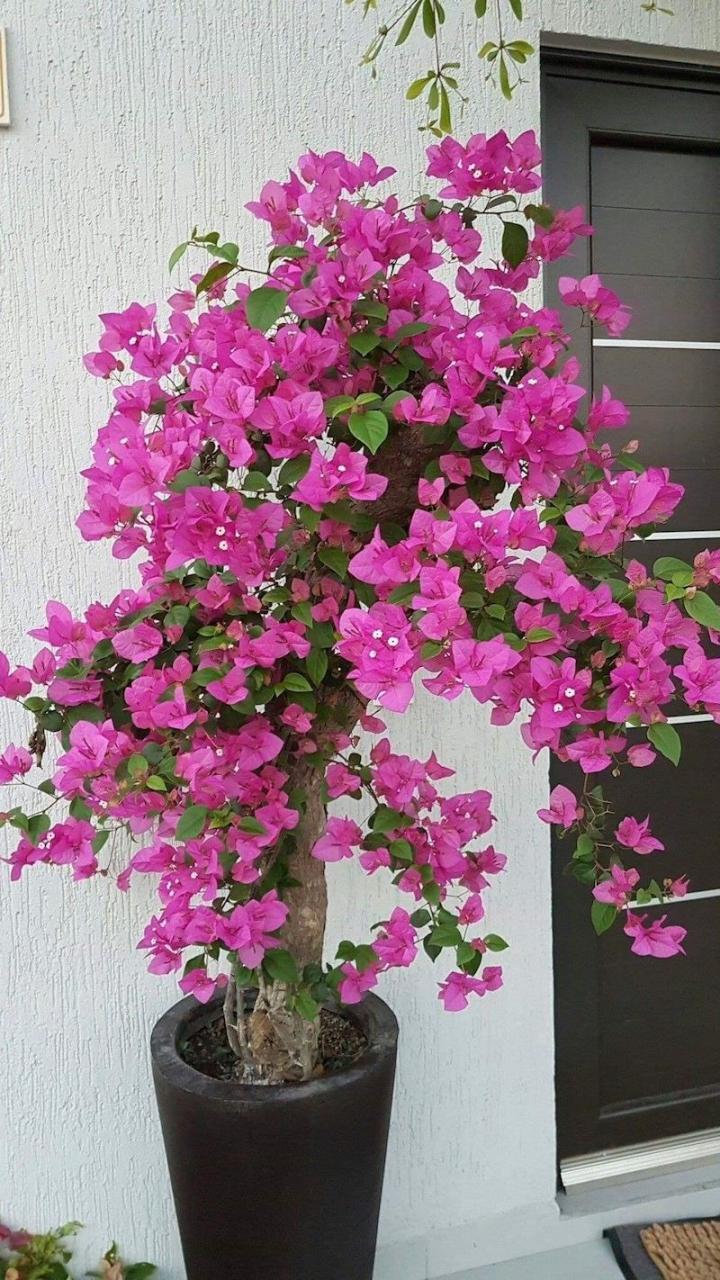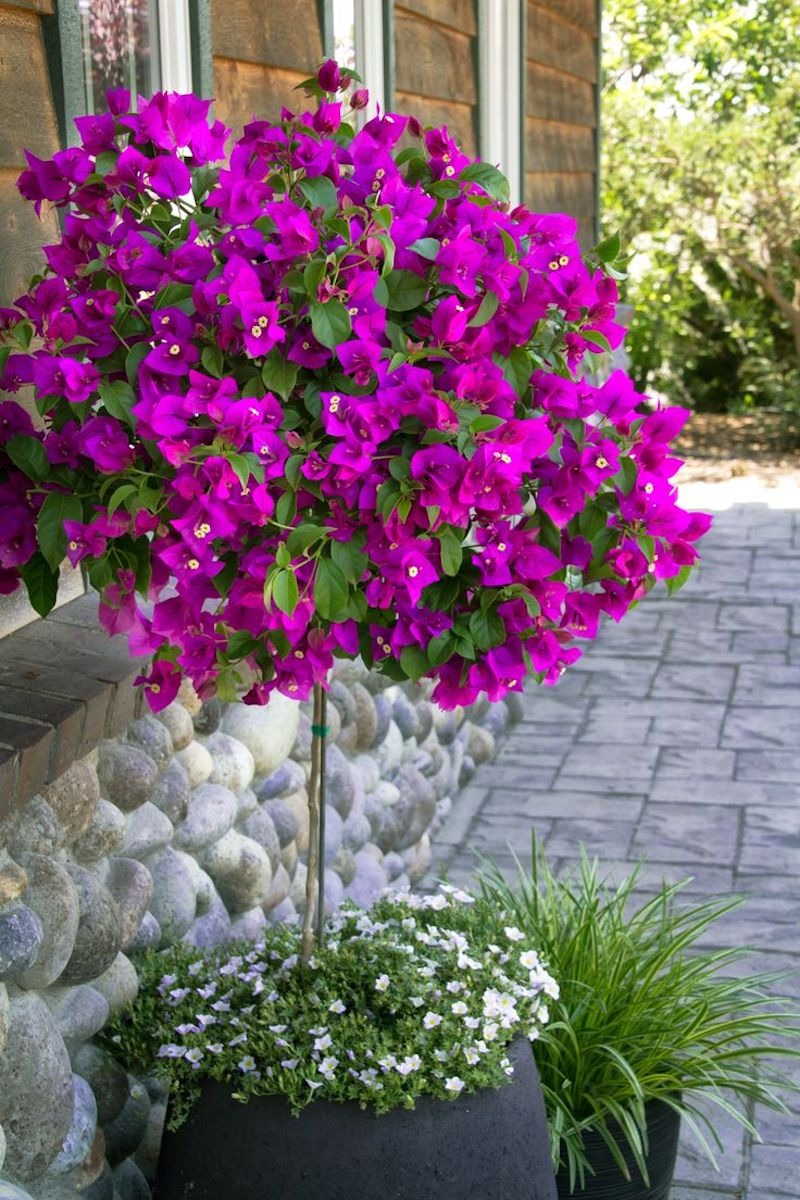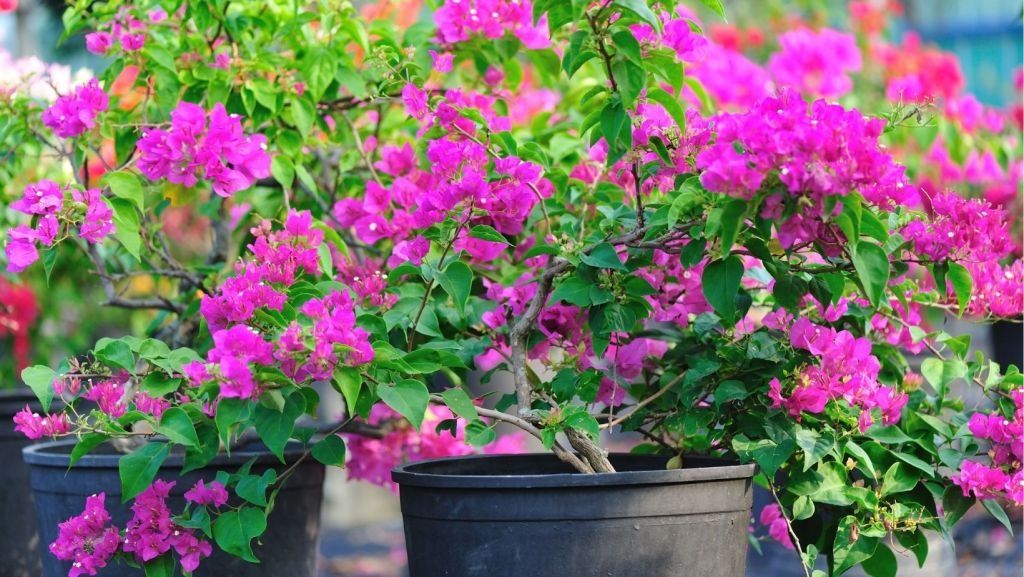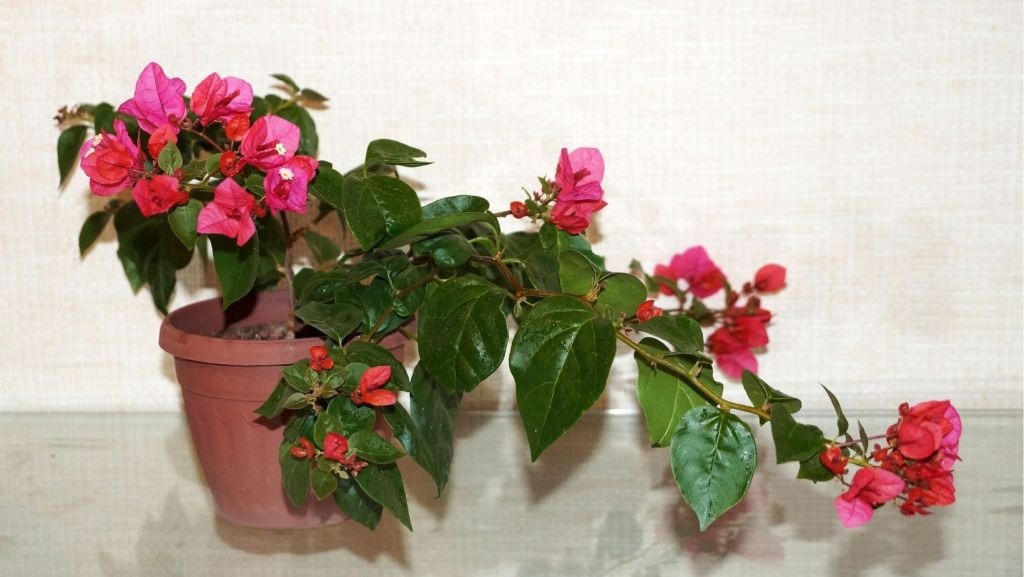Bougainvillea is a plant which is known for its magnificent flowering. It is very often used to beautify facades and gardens. If you fancy adding color to your monochrome walls, don’t hesitate to plant your bougainvillea in a pot. Do not wait any longer to consult the tips and advice on how to plant and care for this pretty plant.
Bougainvillea in pots – care
Note, first of all, that bougainvillea can be grown as a shrub or as a climbing plant. Thus, it can reach 5 meters in height. Note that it needs sun and heat. So, consider setting up the plant in a sunny location sheltered from the winds. Remember, it requires a lot of humidity. This is why it must be installed outside. However, if the temperatures drop below 8 ° C, it should be brought indoors. It’s best to do this even before the first frost in the fall. To do this, you should give it some freshness, as it is not a houseplant.
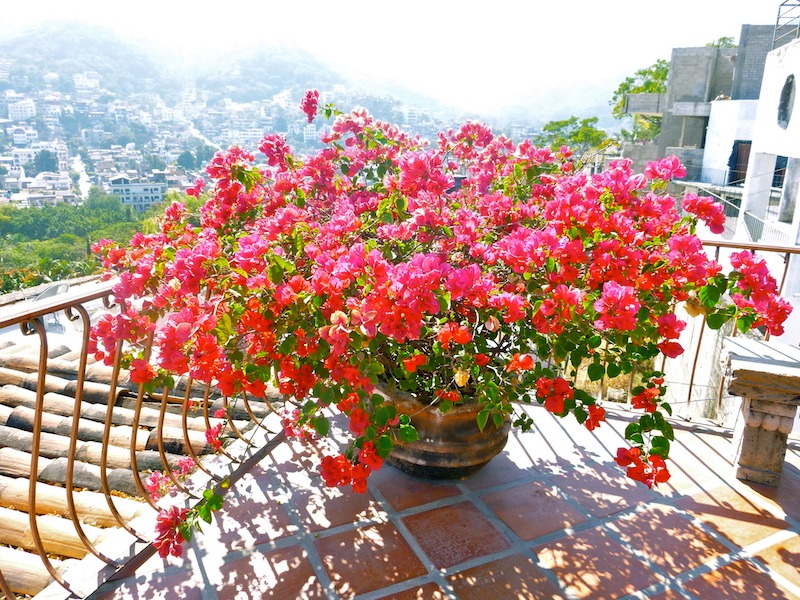
Cutting – bougainvillea
The ideal time to cut your bougainvillea is in late summer (August and September).
The procedure :
Cut a branch to cut and prune it 10 to 15 cm.
Leaf off the branch. Remember to leave 2-3 leaves on the top.
Fill a pot (about 12 cm) with cutting soil.
Plant three stems in it.
Then place the pot in a warm and humid place (on a sunny terrace or on the edge of a window. But note that you should avoid places with full sun).
Water so that the soil is slightly moist.
Take into account that rooting takes 2-3 weeks.
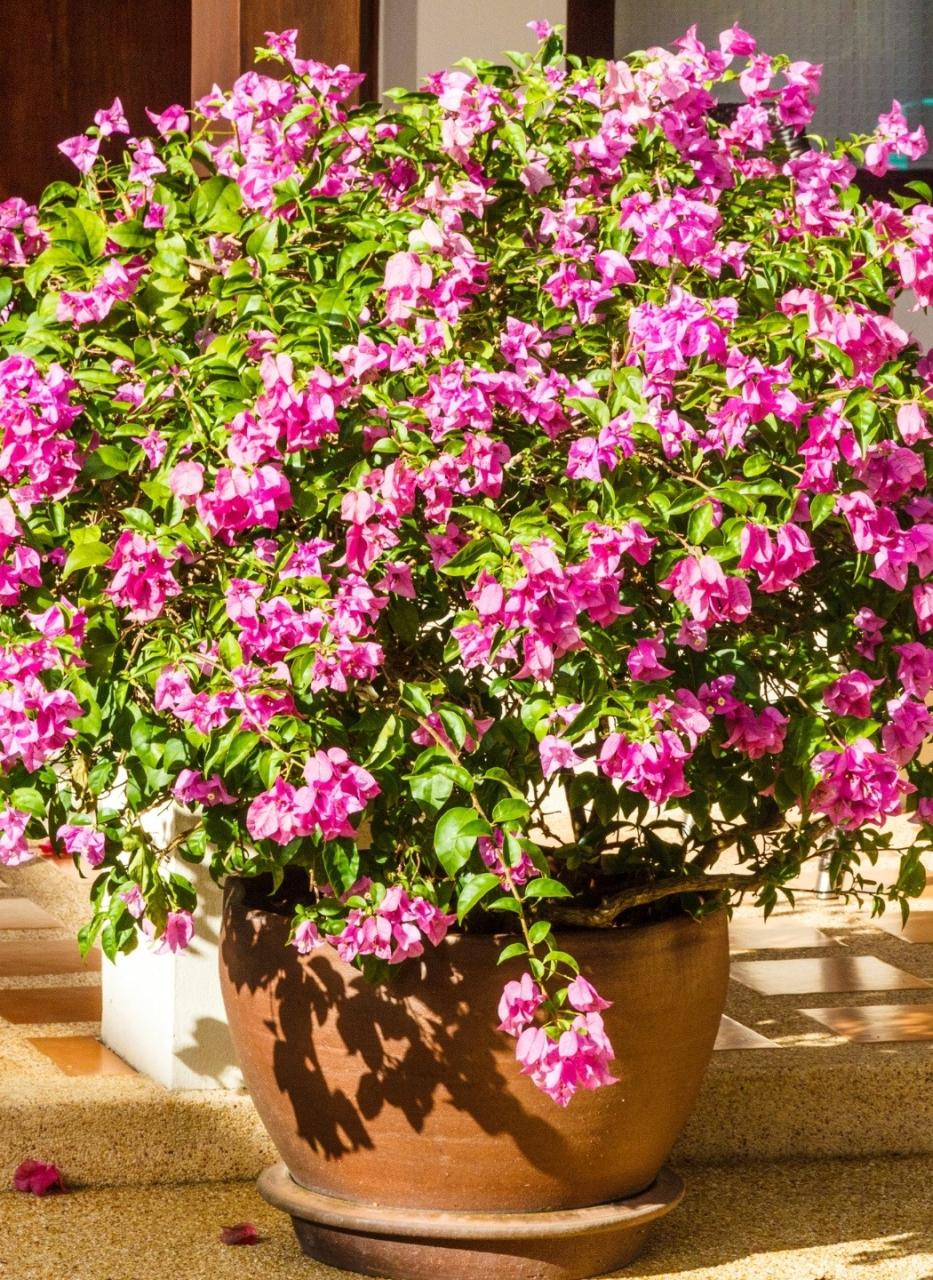
Tips how to plant a potted bougainvillea
In areas where temperatures drop below 0 ° C, it is best to opt to plant bougainvillea in a pot. So you can bring it in before the first frosts in autumn. The plane requires a special soil for flowering plants. Consider putting a draining layer of clay beads at the bottom of the pot. The latter must be drilled at the bottom and have a diameter and a height of 30 cm.
Fertilizer for bougainvillea
The right fertilizer for bougainvillea is high in potassium, phosphate, and calcium. Being rich in these elements, banana peel is, in fact, a natural fertilizer that can optimize the development of your plant. Note, however, that bananas must be from organic agricultural production. Wood ash can also be used as a natural fertilizer because of the nutritional characteristics it possesses. In addition, the ashes protect the plant from disease. Also, plant slurry and the use of organic compost have benefits for bougainvillea.
Repotting – bougainvillea
Consider repotting your plant in the spring in a pot with a larger diameter than the previous one. So the bougainvillea could flourish.
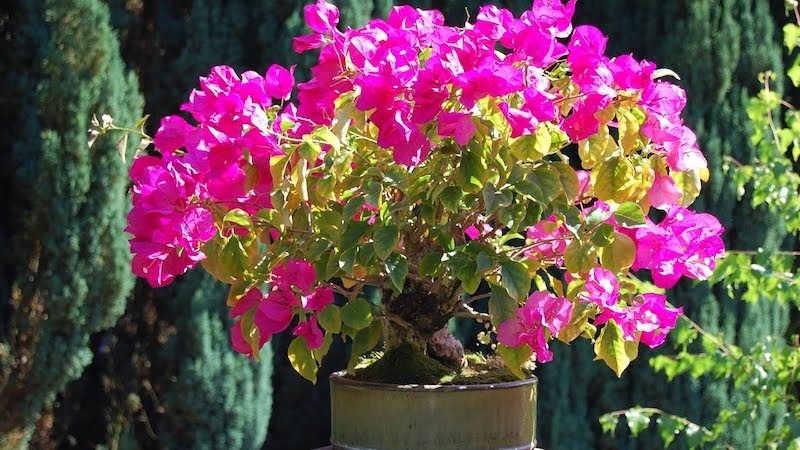
Watering – bougainvillea in pot
Bougainvillea is very resistant to drought. What is more, the less it is watered, the more it flowers. But, note that during the growth period regular and abundant watering is essential (at least the first two years). Be careful not to flood it anyway. Space the waterings, as the soil must dry out before doing so. Note also that from the end of flowering, the plant must be watered once a month.
How to prune a bougainvillea?
Pruning the plant is not entirely essential. If you decide to do this, be careful not to prune the bougainvillea too harshly. It is better to opt for a light and progressive size over the years. The optimal time for pruning is the end of winter. Prune branches that are too long, giving your plant a bushy shape. Consider renewing the vegetation, removing an old branch each year. Also note that faded flowers should be removed. If you opt for the tree shape, you have the option of giving your bougainvillea the bonsai shape. To do this, feel free to check out this video for more details on how to do it.
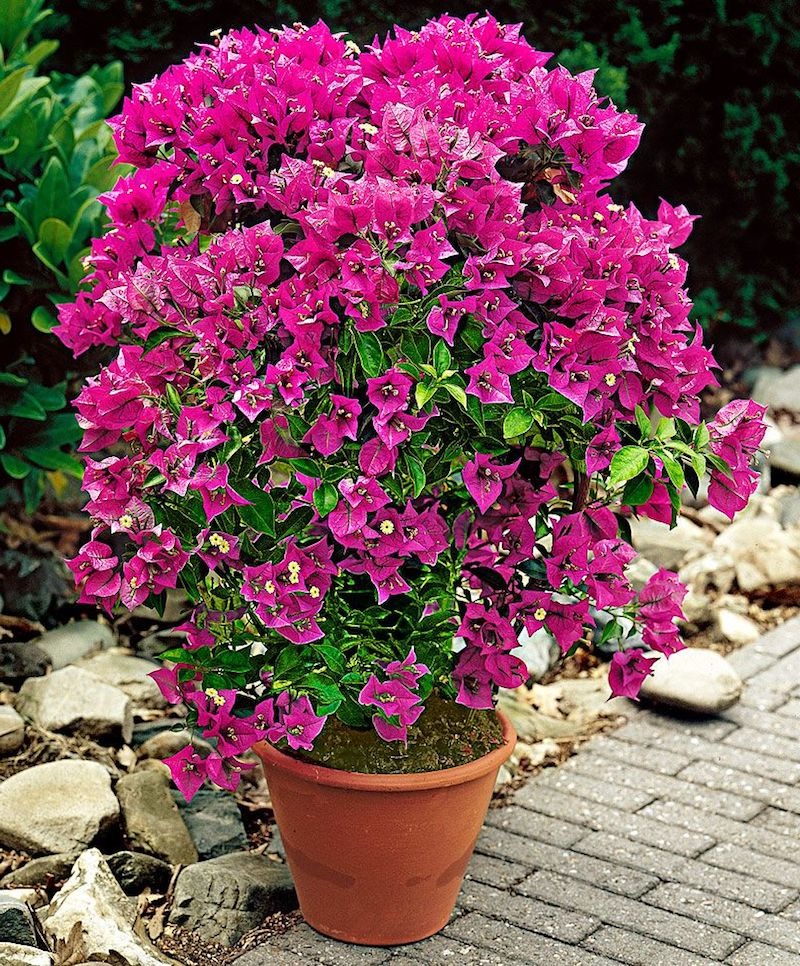
Flowering – bougainvillea
The bougainvillea is covered in bright colors from May to November. The foliage of the plant is evergreen and the flowering – very varied and abundant – from white and orange to purple, passing through yellow.
How to keep a bougainvillea in winter?
To protect your bougainvillea from frost and cold, ensure it is in an unheated place where temperatures are above 10 ° C. The place should be well lit too. Water if the soil is dry in depth.
Why is bougainvillea losing its leaves?
One of the reasons may be too much water. When bougainvilleas are watered too often or heavily, they begin to lose their foliage. The attack of pests can be the cause of loss of the leaves of the plant. A drastic change in exposure or a drafty installation can also cause your bougainvillea to pluck. Note that in winter it is normal if the leaves are falling. On the other hand, in summer it can be due to a lack of light. So, consider placing the plant in a brighter location.

How do you know if a bougainvillea is dead?
Even if your plant looks dead, it may not be. You have to observe the stem and the roots to find parts that can be saved. If you find such a cutting or stem, do not delay in dealing with it. Repot the plant, adding fertilizer. Water and wait a few days for the first signs of life.
